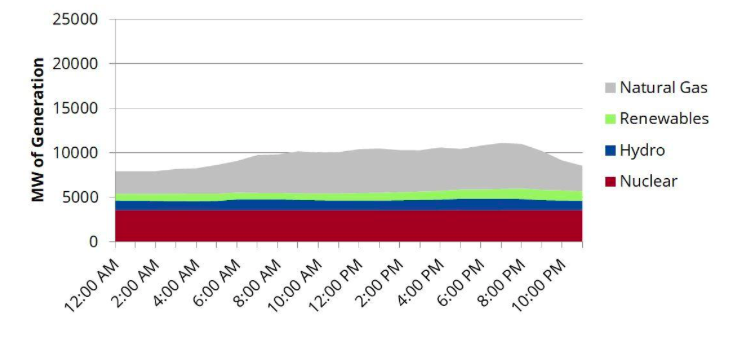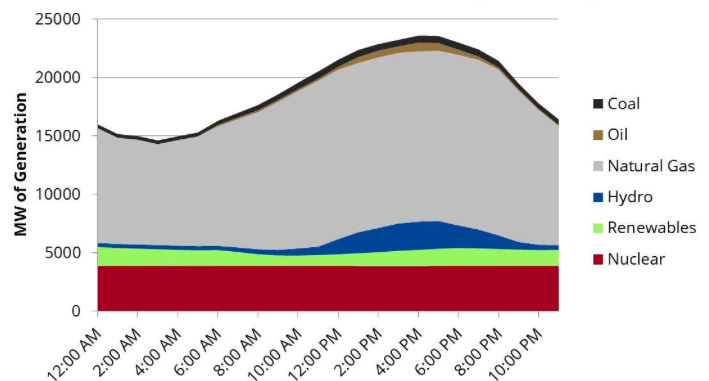ACT LOCAL: GREEN OPPORTUNITIES & SOLUTIONS FOR AMHERST #4. “Shave the Peak” This Summer on High Electrical Use Days


Have you ever felt powerless in the face of climate change? As if any individual action you take will be just a drop in the bucket, and not meaningful? Well, fortunately, those fears don’t reflect reality. Individual actions – such as limiting consumption, switching from gas to electric-powered vehicles and heating, along with adding solar panels and making energy efficiency retrofits -all can make a big difference.
Another very simple action that can be especially meaningful is to join the effort to “shave the peak” on peak days of electrical consumption. Doing so will not only dramatically reduce our emissions, but reduce the cost of our electricity.
So what does it mean to “shave the peak,” and why should you do it?
In the summer, we have high electricity demand. Between 5 p.m. and 8 p.m., ISO New England, our electric grid operator, is forced to draw power from our dirtiest, most expensive power plants, which are otherwise unused. You can help prevent use of this dirty energy, and reduce your electricity use during peak hours by signing up for “Shave the Peak” alerts at the Green Energy Consumers Alliance. That way, you will know when to turn off the air conditioner, lights, and appliances, and when to charge your electric car if you have one. Shave the Peak electricity days are also good times to join others for a swim, a movie, or just to get outside while you’re saving energy. In other words, Shave the Peak days present a very good excuse to have a party!
Since about half of our Amherst residents are renters, it’s important to note that you don’t have to be a homeowner to shave the peak. Anyone can do it. .
In New England, we have one electrical grid that serves the region’s businesses, homes, and other buildings. ISO New England tracks electricity use to make sure there is enough power produced to supply demand. On a typical day in the fall or spring, electricity demand is low at night, when most people are asleep and many industrial users have shut down. Demand rises rapidly from 6 a.m. to 9 a.m., when lights are turned on and businesses open their doors. Solar energy produces power to run homes and businesses between 10 a.m. and 5 p.m., and reduces fossil-fuel electricity demand at mid-day. However, demand rises again between 6 p.m. and 9 p.m., as solar energy collection dwindles and people make dinner or watch television.. Demand falls again at night, and the cycle starts over.

Summer heat throws a big wrench into this pattern.
On the hottest days of summer, people turn up their air conditioning and fans. Demand peaks in the early evening, putting a huge strain on the grid. Electricity demand on a peak day can be twice that of a non-peak day. To meet the high electricity demand, the electrical grid operator signals old, expensive power plants to start supplying energy to the grid. These power plants—including coal and oil plants—sit unused for most of the year, but are kept around just for these peak days.

That’s why electricity during the 10 percent of hours that have the highest demand lead to 40 percent of electrical grid costs. It’s also why electricity is dirtiest during peak hours.
The Shave the Peak program of the Green Energy Consumers Alliance closely follows demand predictions from ISO New England. When it looks as if the next day will be one of the dirtiest and most expensive electricity days, the program sends text and email alerts to subscribers, reminding them to reduce their electricity use where they can.
Last year, which was, the program’s second year, subscribers increased by a factor of 10. Let’s do that again this summer! The more people across New England who participate, the bigger difference we can make. So sign up on the Shave the Peak website and tell friends and family to do the same.
Not only does collective action lead to a bigger impact, it gives us all the chance to really think about our daily use of the grid.
Darcy DuMont is an Amherst town councilor representing District 5 and is the lead sponsor of the legislation to establish an Amherst Energy and Climate Action Committee. (Councilor Evan Ross co-authored the legislation.) Views expressed are hers and not those of the town council. Kai Salem of the Green Energy Consumers Alliance is a contributor to this month’s column.
